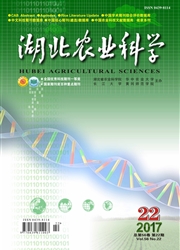
欢迎您!东篱公司
退出

 中文摘要:
中文摘要:
极体中的染色体是一个在体细胞核移植中常被忽视的问题。哺乳动物卵母细胞在减数分裂过程中会产生两个极体,即第一极体和第二极体,存在极体中的染色体与残留在卵母细胞中的同源染色体具有相同的遗传潜能,完全有能力参与胚胎的发育,并产生正常的克隆后代。因此,很有必要对极体进行研究,从而为细胞生物学以及相关生物学研究提供有价值的参考。
 英文摘要:
英文摘要:
The chromosomes of mammalian polar body were often neglected in somatic cell nuclear transplantation. The first polar body and the second polar body were produced in the process of meiosis, and the polar body chromosomes had the same genetic potential as their sister chromosomes remaining in the oocyte. It could participate in the embryo development and produce normal clone progeny. It is necessary to study polar bodies and provide a valuable reference for the cell biology and biological research.
 同期刊论文项目
同期刊论文项目
 同项目期刊论文
同项目期刊论文
 期刊信息
期刊信息
